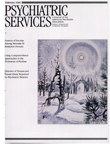Illicit-drug injection among psychiatric patients without a primary substance use disorder
Abstract
OBJECTIVE: To increase understanding of HIV infection risk among patients with severe mental illness, the study sought to identify predictors of injection drug use among patients who did not have a primary substance use disorder. METHODS: A total of 192 patients recruited from inpatient and outpatient public psychiatric facilities were interviewed by trained mental health professionals using the Structured Clinical Interview for DSM-III-R (SCID), the Positive and Negative Syndrome Scale, and the Parenteral Drug Use High-Risk Questionnaire. RESULTS: Sixty percent of the sample met SCID criteria for lifetime substance abuse or dependence. Although only two patients reported drug injection in the past six months, 38 (20 percent) had injected drugs since 1978, the year that HIV began to spread in the U.S. A lifetime diagnosis of opioid abuse or dependence was a strong predictor of drug injection, but only 11 of the 38 patients with a recent history of injection drug use had either of these diagnoses. The likelihood of injecting drugs was four times greater among patients with a history of intranasal substance use compared with those without such use, three and a half times greater among African-American patients than among non-African-Americans, and five times greater among patients aged 36 or older compared with younger patients. CONCLUSIONS: In assessing HIV risk among patients with severe mental illness, it may be more important to identify the route of drug administration than the specific substances used because of the strong association between intranasal drug use and history of injection.
Access content
To read the fulltext, please use one of the options below to sign in or purchase access.- Personal login
- Institutional Login
- Sign in via OpenAthens
- Register for access
-
Please login/register if you wish to pair your device and check access availability.
Not a subscriber?
PsychiatryOnline subscription options offer access to the DSM-5 library, books, journals, CME, and patient resources. This all-in-one virtual library provides psychiatrists and mental health professionals with key resources for diagnosis, treatment, research, and professional development.
Need more help? PsychiatryOnline Customer Service may be reached by emailing [email protected] or by calling 800-368-5777 (in the U.S.) or 703-907-7322 (outside the U.S.).



